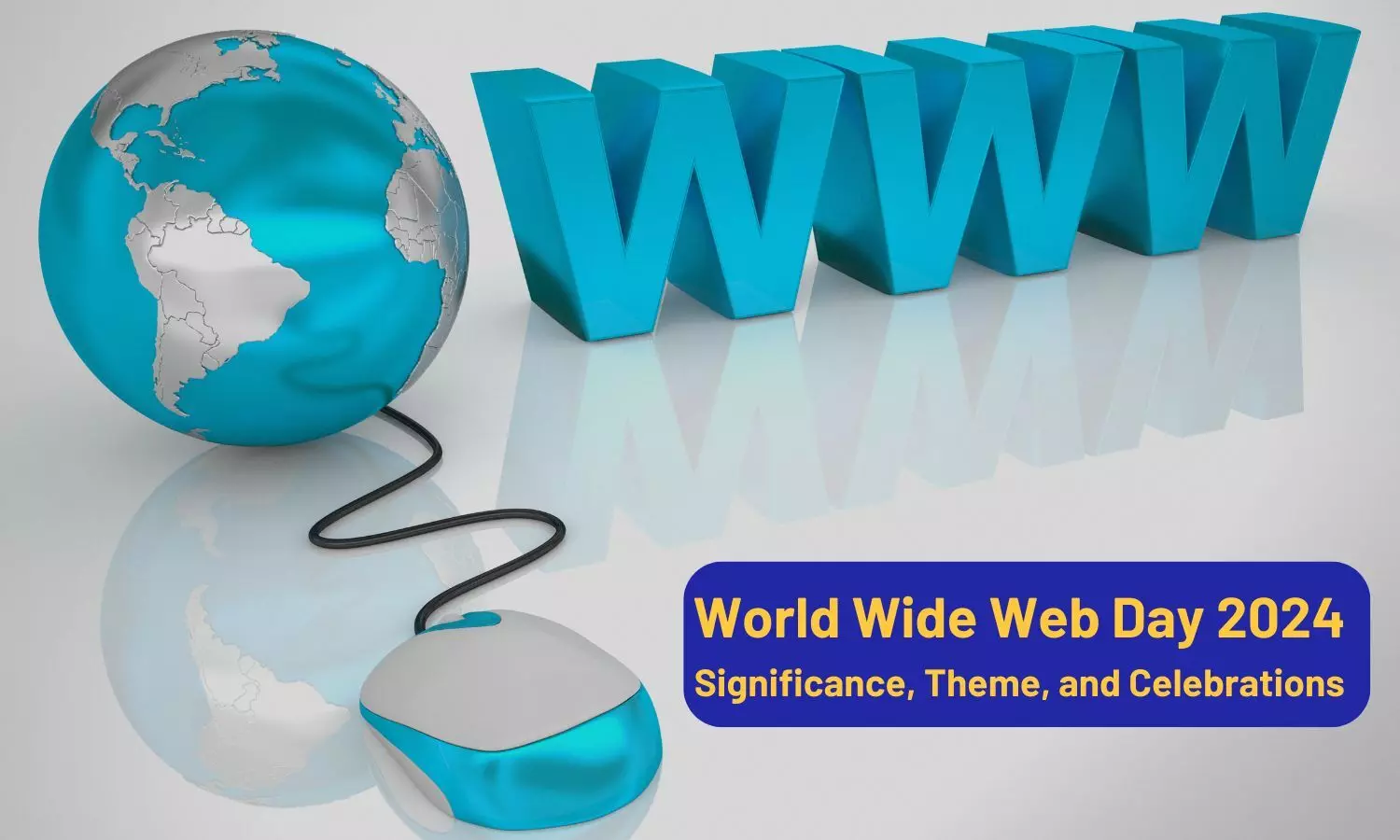World Wide Web Day 2024: Significance, Theme, and Celebrations
Learn about the history, theme, significance, and celebrations of World Wide Web Day 2024. Know the impact and importance of the World Wide Web in modern life.
World Wide Web Day 2024: Significance, Theme, and Celebrations

The significance of World Wide Web Day lies in recognising the technological advancements made possible by the Web and its role in shaping our daily lives. The World Wide Web Day theme 2024 focuses on different aspects of the Web's influence and future developments. Keep reading to dig deeper into the concepts of WWW.
The World Wide Web (WWW), often called the Web, is a system of interconnected webpages and information accessible via the Internet. It was designed to facilitate the easy sharing and discovery of information by connecting various pages through links. The Web allows us to browse websites, watch videos, shop online, and connect with others around the world through computers and phones. The World Wide Web encompasses all web pages and public websites accessible on local computers and other devices via the Internet. Users can get further information by navigating links interconnecting these pages and documents. This data may be presented in text, audio, picture, or video formats on the internet.
What is the World Wide Web?
The World Wide Web was initiated by CERN in 1989. It comprises a collection of diverse websites worldwide, hosting various types of information shared via local servers or computers. Web pages are linked using hyperlinks, also known as hypertext, formatted in HTML. These hyperlinks, fundamental to the Internet, are accessed through Hypertext Transfer Protocol (HTTP). These digital connections enable users to access desired information by linking related content. The advantage of hypertext is that it allows users to click on words or phrases and access more detailed information on other sites.
History of the World Wide Web
The World Wide Web began in 1989 with Tim Berners-Lee's project aimed at helping researchers collaborate effectively at CERN. To foster the Web's development, the World Wide Web Consortium (W3C) was established, directed by Tim Berners-Lee, known as the father of the web. CERN, where Berners-Lee worked, is a community of over 1,700 researchers from more than 100 countries. These researchers split their time between CERN and their home institutions, necessitating strong communication for data exchange. The WWW was developed to meet this need, facilitating easy sharing and access to information among researchers.
System Architecture of the World Wide Web
From a user's perspective, the Web browser history shows a vast, global network of documents or web pages. Each page can include links to other pages across the globe, which can be accessed and viewed through browsers such as Internet Explorer, Netscape Navigator, and Google Chrome. The browser retrieves the requested page, processes the text and formatting instructions, and displays it correctly on the screen.
For example, when a user clicks on a hyperlink to a page on abd.com, the browser sends a message to the abd.com server requesting the page. The server responds by sending the requested page back to the browser, which then displays it on the user's device. This process illustrates the basic model of how the Web operates, showing the interaction between client machines and web servers.
How the World Wide Web Works
Web browsers are essential for accessing web pages. These programs display text, data, pictures, animations, and videos on the Internet. Web browsers provide software interfaces that allow users to access hyperlinked resources on the World Wide Web. Initially, browsers were used primarily for surfing the Web, but they have evolved into versatile tools. When users request web pages or other information, their system's web browser sends a request to the server. The web server then provides the requested information back to the browser, which displays it to the user.
Web browsers can perform various tasks, including conducting searches, sending emails, transferring files, and more. Commonly used browsers include Internet Explorer, Opera Mini, and Google Chrome. This client-server architecture of the Internet ensures that users can access and utilize a wide range of information and services.
Importance of the World Wide Web
The importance of the WWW is evident in how it has transformed access to information globally. It offers a vast network of interconnected documents and resources accessible via the Internet. Web browsers enable users to navigate websites, access multimedia content, communicate, and conduct transactions online. The WWW has revolutionized communication, commerce, education, and entertainment, shaping modern society and facilitating a connected global community. Its continued evolution and accessibility drive innovation and connectivity worldwide, making it an indispensable part of modern life.
World Wide Web Day’s history celebrates the creation and impact of the WWW. It highlights the significance of the Web in modern life, such as enabling easy access to information, enhancing communication, and supporting various online activities. World Wide Web celebration activities often include educational events, workshops, and discussions on the Web's evolution, history, and impact. World Wide Web Day is a tribute to the transformative power of the internet. The day also celebrates its profound impact on our daily lives and the continuous advancements that shape our digital future.

